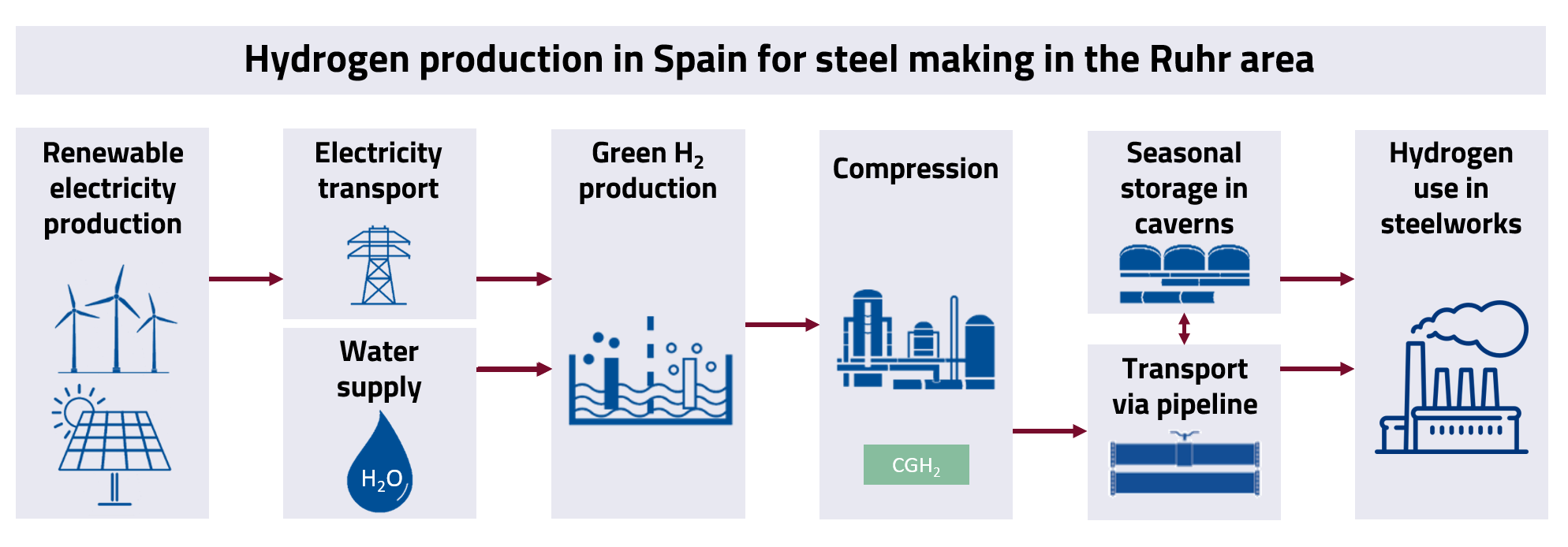3.4 Hydrogen Supply Chains
After you have learned about the different technologies for storing and transporting hydrogen in the previous two sections, you will learn in this last part of the chapter what future supply chains for green hydrogen could look like. The term hydrogen supply chain describes the entirety of all process steps and the technologies applied between the production of the initial raw materials (e.g. renewable electricity) and the end use of the hydrogen or the derivative.
2. Example 1: Storage and transport of compresses hydrogen

As explained in Chapter 3.1, Germany will probably not be able to cover its hydrogen demand completely by itself. Importing by pipeline from sun-rich regions in Southern Europe and North Africa is a possible alternative. In order to make such an import possible, a transnational network of hydrogen pipelines must be established. Numerous operators of natural gas pipelines from various European countries have joined forces for this purpose and want to set up the so-called European Hydrogen Backbone (for further information click here) by 2040, which is to enable the transport of hydrogen from North Africa or Southern Europe via Spain or Italy to Sweden.